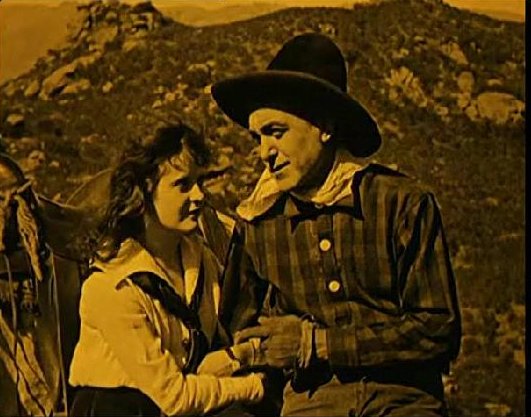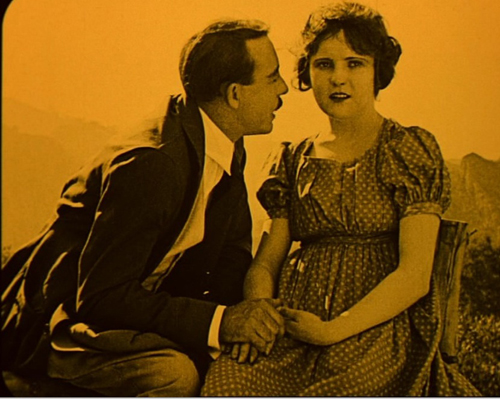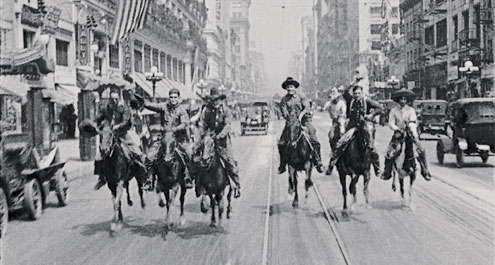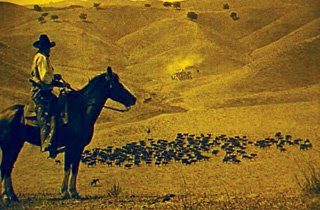
Bucking Broadway, a John Ford silent Western from 1917, is included as an extra on the new Criterion DVD edition of Stagecoach. It's a real revelation.
One of the earliest films Ford directed, it has a rather lame plot. A cowboy in Wyoming loses his girl to a visiting Easterner, who takes her back to New York to marry her. The girl has second thoughts about the guy and sends for the cowboy, who shows up in New York with some of his cowboy pals to rescue her and thrash the Easterner, who turns out to be a drunk, a lout and a creep.

The New York sequences were shot in Los Angeles, so Ford doesn't get to have much fun visually with the idea of cowboys on Broadway. Most of the city action takes place in a big hotel, and the donnybrook between the cowboys and the swells at a big society party there is clumsily staged and unsatisfying. There are a few iconic shots of the cowboys riding horses down the middle of a city street, but there's no more action than this in the urban exteriors.

It's the first half of the film, before the scene switches to the city, that offers the revelation. It's made up of a series of stunningly beautiful images of ranch life, dynamically composed shots that have real poetic power. Even back then, when Ford was just getting started, he had an eye for cinematic composition, for the choreography of movement within a frame that rivaled Griffith's. One could even make a case that his eye surpassed Griffith's by then, just a year after the master directed Intolerance.

Certainly the first half of Bucking Broadway is one of the great achievements of silent cinema, visually speaking. It transforms a simpleminded tale into a lyric poem about the West as lovely as any passage in any film Ford ever made.
